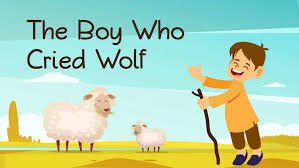The fable of The Boy Who Cried Wolf is one of the most enduring stories from Aesop’s collection, a tale that has transcended centuries to deliver a powerful lesson about honesty and trust. While many know the basic premise—a shepherd boy tricks villagers with false alarms until a real wolf appears and no one believes him—few are aware of the deeper historical, psychological, and cultural layers that make this story so impactful. Its origins trace back to ancient Greece around 600 BCE, where Aesop, a storyteller believed to have been a freed slave, used simple yet profound narratives to convey moral truths. Unlike modern adaptations, which often target children, Aesop’s fables were originally intended for adults, particularly those in positions of influence, as cautionary tales about human behavior. The story’s longevity speaks to its universal message, one that resonates across cultures and eras, reminding us that credibility, once lost, is hard to regain.
The characters in the fable, though few, are rich in symbolism. The shepherd boy, often depicted as young and restless, embodies the human tendency toward boredom and the craving for attention. His role as a shepherd is significant—shepherds were trusted with protecting valuable livestock, making his negligence not just a childish prank but a breach of responsibility. The villagers, initially compassionate and quick to respond, represent society’s willingness to help those in need. However, their growing indifference after repeated deceptions mirrors how communities become desensitized to false alarms, whether in ancient times or today’s world of misinformation. The wolf, a silent but ever-present threat, symbolizes the real dangers that emerge when warnings are ignored. Interestingly, early versions of the story varied by region, with some cultures substituting the wolf for other predators like lions or hyenas, adapting the tale to local fears while preserving its core lesson.
The events of the story unfold in a deliberate sequence designed to reinforce its moral. The boy’s first false alarm draws immediate concern from the villagers, who rush to his aid only to find no threat. Their mild reprimand reflects a society’s initial patience with minor transgressions. When the boy repeats his trick, their frustration grows, illustrating how repeated deceit erodes trust. The final act—the arrival of a real wolf—seals the boy’s fate. His cries, once met with urgency, are now dismissed, and the consequences are dire. This three-part structure is not just a storytelling device but a psychological blueprint showing how trust deteriorates over time. Modern parallels are everywhere, from the boy who cried wolf to the politician who exaggerates threats or the social media user who spreads fake news—each instance chips away at collective trust until genuine crises are met with skepticism.
Beyond its straightforward moral, the story offers profound psychological insights. The boy’s behavior can be analyzed through the lens of attention-seeking and the human need for validation. Isolated in his duties, he resorts to deception to break the monotony, a scenario familiar to anyone who has felt overlooked or understimulated. The villagers’ reaction, meanwhile, exemplifies the bystander effect, where repeated exposure to false alarms leads to inaction even in the face of real danger. This phenomenon is evident in everything from emergency response systems to public health warnings, where overuse or misuse of alerts can lead to complacency. The fable also touches on the concept of accountability—the boy’s role as a shepherd was not just a job but a societal responsibility, emphasizing that negligence in critical roles can have far-reaching consequences.
The story’s adaptability across cultures highlights its universal appeal. In Indian variations, the boy might cry “tiger!” instead of “wolf,” while African renditions could feature a hyena as the predator. These adaptations show how the tale molds itself to local contexts without losing its essential message. Even in modern retellings, the core lesson remains intact, whether in corporate ethics training, where it’s used to discuss transparency, or in psychological counseling, where it illustrates the fallout of compulsive lying. The fable’s endurance is a testament to its relevance, proving that some truths are timeless.
What makes The Boy Who Cried Wolf particularly compelling today is its application to contemporary issues. In an era of “fake news” and misinformation, the story serves as a stark warning about the dangers of deceit. Just as the villagers grew weary of the boy’s tricks, modern audiences are increasingly skeptical of sensationalist media or manipulative leaders. The fable also underscores the importance of credibility in personal and professional relationships—once trust is broken, rebuilding it requires immense effort. On a broader scale, the story invites reflection on how societies respond to repeated false alarms, whether in climate change warnings, public safety alerts, or financial fraud. The boy’s ultimate fate—a consequence of his own actions—reminds us that honesty isn’t just a virtue but a necessity for survival.
The enduring power of The Boy Who Cried Wolf lies in its simplicity and depth. It distills complex human behaviors into a narrative accessible to all ages, yet its implications are vast. From its ancient roots to its modern-day applications, the fable continues to teach, warn, and inspire. Whether encountered in a child’s bedtime story or a business ethics seminar, its message is clear: trust is fragile, and deception, no matter how small, carries a cost. In a world where truth often feels elusive, the story’s lesson is more vital than ever—a reminder that credibility, once lost, is the hardest thing to regain.
Go to main page


